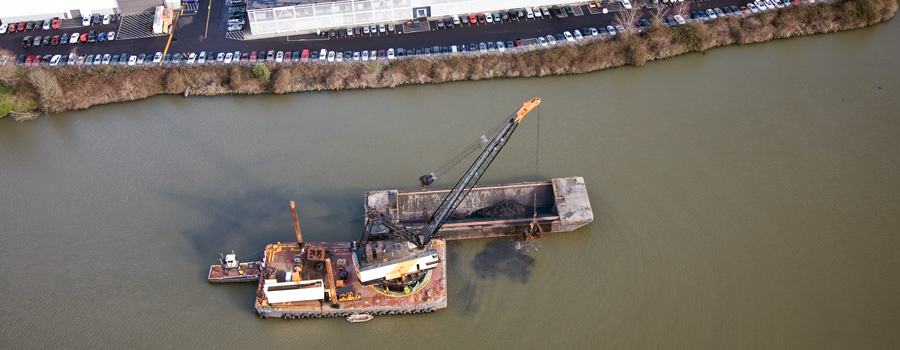LDW Superfund Cleanup activity and progress

LDWG has invested nearly $200 million on studies and cleanup of early action areas. As of November 2024, we have started construction for the cleanup in the southern third (Upper Reach) of the waterway. Construction in the Upper Reach is expected to last through spring 2027. View design documents, and visit ldwg.org for the latest construction updates.
King County’s work with LDWG so far
- Duwamish habitat restoration
- Early action areas - cleanups of some of the most contaminated areas within the LDW done to reduce the risk of exposure to contaminated sediment and get a head start on the Superfund cleanup
- Enhanced Natural Recovery Activated Carbon Pilot Study - conducting a pilot study with an innovative sediment cleanup technology.
- Pre-Design Studies - working with the EPA on pre-design studies to inform the Superfund cleanup and developing baseline conditions to compare to future condition (remedy effectiveness).
- Fishers Study and Institutional Controls - completed a study in partnership with the US Environmental Protection Agency (EPA) and the Washington State Department of Ecology (Ecology) to learn more about fishing on the Lower Duwamish Waterway.
Additional environmental work in the Duwamish
-
Sediment Management Plan
- Projects in the Green/Duwamish Watershed
-
King County’s Green Duwamish Watershed Strategy
- Source Control. View reports in library.
- Protecting our waters - Controlling combined sewer overflows
- WRIA 9
Activated Carbon Pilot Study
The Lower Duwamish Waterway Group partners conducted a pilot study (February 2017) to determine if activated carbon, a common purifier in household water filters, traps contaminants in waterway sediments. The study was designed to see how much polychlorinated biphenyls (PCBs) and other pollutants can be prevented from entering the food chain. The pollutants are trapped by activated carbon that is mixed in a thin layer of clean material (either sand or gravely sand) and placed over existing contaminated sediments. This method, if successful, could be used in the cleanup of the Lower Duwamish Waterway.

 Translate
Translate